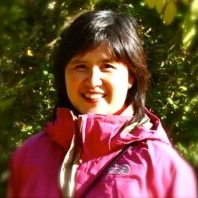Topic Menu
► Topic MenuTopic Editors



The Arctic Atmosphere: Climate and Weather
Topic Information
Dear Colleagues,
Over timescales ranging from daily to seasonal to millennial, the atmosphere undergoes larger changes in the Arctic than in other parts of the world. These rapid changes arise from feedbacks and interactions with the cryosphere and with the atmosphere and oceans of lower latitudes. The limited understanding of these feedbacks and interactions adds uncertainty to the future evolution of the Arctic atmosphere. This Topic seeks papers that advance our understanding of changes in the Arctic atmosphere. Papers can be observational analyses in which historical changes (over any time scale) are documented and/or diagnosed, modeling studies addressing feedbacks and mechanisms contributing to Arctic change, and studies addressing future Arctic changes. The latter can include evaluations of uncertainties and diagnostic analyses of the processes and feedbacks involved in future changes. Papers on extreme events in the Arctic and Arctic-midlatitude linkages are especially welcome. Attribution studies in which slow-onset changes or extreme events in the Arctic are evaluated in the context of anthropogenic forcing are also appropriate for this Topic. Attribution studies can address changes in other Arctic system components (the cryosphere, ocean, land surface) that are coupled to changes in the atmosphere.
Prof. Dr. John E. Walsh
Prof. Dr. Uma S. Bhatt
Dr. Muyin Wang
Topic Editors
Keywords
- arctic
- climate change
- arctic weather
- polar climate
Participating Journals
| Journal Name | Impact Factor | CiteScore | Launched Year | First Decision (median) | APC |
|---|---|---|---|---|---|

Atmosphere
|
2.9 | 4.1 | 2010 | 17.7 Days | CHF 2400 |

Challenges
|
- | - | 2010 | 27.4 Days | CHF 1400 |

Climate
|
3.7 | 5.2 | 2013 | 19.7 Days | CHF 1800 |

Geosciences
|
2.7 | 5.2 | 2011 | 23.6 Days | CHF 1800 |

MDPI Topics is cooperating with Preprints.org and has built a direct connection between MDPI journals and Preprints.org. Authors are encouraged to enjoy the benefits by posting a preprint at Preprints.org prior to publication:
- Immediately share your ideas ahead of publication and establish your research priority;
- Protect your idea from being stolen with this time-stamped preprint article;
- Enhance the exposure and impact of your research;
- Receive feedback from your peers in advance;
- Have it indexed in Web of Science (Preprint Citation Index), Google Scholar, Crossref, SHARE, PrePubMed, Scilit and Europe PMC.

